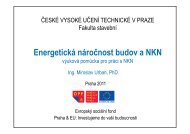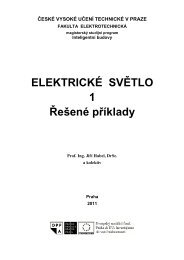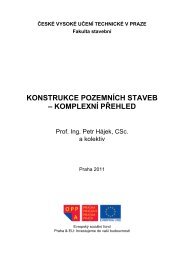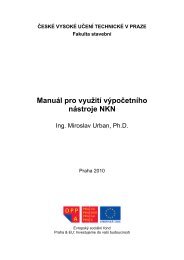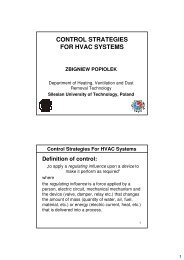Buses, Protocols and Systems for Home and Building Automation
Buses, Protocols and Systems for Home and Building Automation
Buses, Protocols and Systems for Home and Building Automation
You also want an ePaper? Increase the reach of your titles
YUMPU automatically turns print PDFs into web optimized ePapers that Google loves.
3. Open st<strong>and</strong>ardized protocols<br />
Evropský sociální fond. Praha & EU: Investujeme do vaší budoucnosti.<br />
<strong>Protocols</strong> covered by some world-wide st<strong>and</strong>ards can be divided, according to the system<br />
complexity (Chapter 1.3), into two big groups: complex <strong>and</strong> specialized protocols.<br />
If we apply the well-known three-level hierarchical model of automation <strong>and</strong> control system<br />
on building automation protocols, we get a division shown in Fig. 3.1 <strong>and</strong> Fig. 3.2. Industrial<br />
control system theory traditionally describes these levels this way:<br />
- Field level - sensors, actuators <strong>and</strong> controllers<br />
- <strong>Automation</strong> (processing) level – execution <strong>and</strong> control systems (SCADA, HMI, MES or<br />
databases)<br />
- Management (in<strong>for</strong>mation) level – enterprise applications, ERP, SAP…<br />
KNX (Chapter 3.1.2) <strong>and</strong> LonMark (Chapter 3.1.3) are more field <strong>and</strong> automation level<br />
oriented (sensors, actors, higher control algorithms, monitoring, SCADA). BACnet (Chapter<br />
3.1.1) is, as opposite to these two protocols, more management level <strong>and</strong> less field level<br />
oriented. As we can see from the figure Fig. 3.2, single-purpose protocols are ranked in the<br />
field level.<br />
According to H. M. Newman from the Cornell University, Ithaca, USA, these three levels of<br />
building automation theory can be understood in a little bit different way (7):<br />
“The management level, <strong>for</strong> example, is where the majority of operator interface functions<br />
reside. Additional functions include communication with controllers, monitoring, alarm<br />
annunciation, trend logging <strong>and</strong> statistical analysis, centralized energy management<br />
functions, <strong>and</strong> communication with, or coordination of, dedicated non-HVAC systems such as<br />
fire alarm <strong>and</strong> security control. As a practical matter, most of the devices at this level are<br />
personal computer workstations.<br />
The automation level is where the majority of real-time control functions are carried out. The<br />
devices tend to be general-purpose, programmable controllers.<br />
The field-level contains the devices that connect to sensors <strong>and</strong> actuators. We would tend to<br />
think of field-level devices as unitary or application-specific controllers.”<br />
Fig. 3.1: The three level architecture <strong>and</strong> basic protocols (8)<br />
Ondřej Nývlt - <strong>Buses</strong>, <strong>Protocols</strong> <strong>and</strong> <strong>Systems</strong> <strong>for</strong> <strong>Home</strong> <strong>and</strong> <strong>Building</strong> <strong>Automation</strong> 11




